
Blog, Heel Pain, Shockwave, Sports Care

Blog, Heel Pain, Shockwave
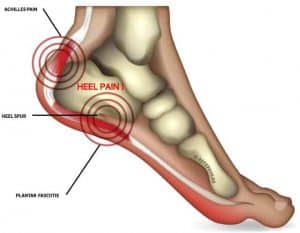
Top 6 reason your heel pain isn’t getting better – UPDATED
You CAN beat Heel Pain
Heel pain can be debilitating! The pain often stops people in their tracks first thing in the morning! Walk a few steps and it may be relieved. Others as the day progresses, the pain becomes worse. Finding help can be frustrating and confusing as you can often see multiple practitioners and receive multiple answers with little relief.
We first wrote this article in 2014. 3 years later, after helping literally 1000’s more patients with heel pain. After HOURS more of research and implementing significant changes in the way medicine has begun to understand Heel Pain, it became time to updated this very popular article!
With the experience of literally helping 1000’s of heel pain patients, between 10 and 20 a day! We have put together the following list of the Top 6 reasons we have noted patients have not got better.
We hope this helps you on the way to beating your heel pain.
1.You decide to go it alone and NOT get professional advice.
Of all the people we see, a large proportion of them have never had any care or professional advice. Quotes like “I just thought it would go away” or “A friend told me what they did to get rid of the pain and I just tried that”. Most times it doesn’t! You will increase your chance of beating heel pain, significantly by getting a professional opinion. Professional advice and treatment costs money. Yes some people find this expensive however others find it invaluable. It depends on how much you really want to get rid of your very sore heels?
2.You wear thongs (flip flops) because your feet are sore
Wearing thongs, Croc type shoes or even bare feet for many people make their feet feel better initially but all our experience tells us you are doing more damage. The pain you feel days later not necessarily at the time. You are welcome to argue this point as much as you like, while you continue to hobble…………
3.You get advice and then choose which bits you use.
Great work on getting advice now it’s time to take it ……yes ALL of it. When a care plan is developed for you, if you choose only the bits you like to hear and the easy bits, you will end up failing to get better. Your Podiatrist should work with you as a patient to establish the best way to relieve you of your pain. They should speak to you about what shoes are best for you. What treatment will get you better quickest, including strength exercises, therapy to relax the soft tissue and possibly orthotics. Now choosing NOT to do some of the suggested treatment universally ends up with patients not getting better. Our Podiatrists do all that and more, does yours?
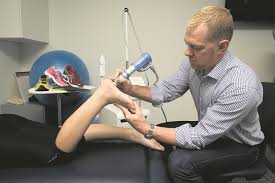
4.You bought hard rigid orthotics from a Podiatrist.
Our experience tells us that rigid hard orthoses on most occasions irritate the heel and the arch region adding to your discomfort. We have over the years collected many pairs of rigid orthotic from patients who give them to us in frustration after finding they have hindered rather than help. Secondly if this is the only therapy you were given, with the exception of a couple of possible stretches then we would suggest to you that there is more to getting rid of your pain than this – ask the question “So how is this rehabilitating my damaged soft tissue?”
5.You stop ALL activity.
As our understanding has changed over the years we now appreciate the following – “TENDONS HATE CHANGE”. Stopping all activity if you are currently active is a sure-fire way to ensure that when you return to your activity you will also see the return of your heel pain!
You SHOULD make modification to activity, However a complete stop will mean you either
A. Need to rebuild your activity over quite an extended time.
or
B. Your heel pain is likely to return!
For the moment STOP Jumping of and onto things. For example, on + off a truck, box jumps at exercise class, skipping or other high intensity impacting the heel and forefoot until we have you back to comfortable. We will then slowly load you back up to these activities.
6.You choose a practitioner who does not understand heel pain.
So your GP says they will fix your heel pain? Your Physio who is treating your shoulder says the same and the Podiatrist you see, who works one day a week at your local GP clinic and cuts your toe nails, says they will fix it no problem. Who do you choose?
Your heel pain is not simple its complex and for you it’s really sore! Choose someone who see’s and treats heel pain regularly. Choose someone who is passionate about making sure that they help you on the way to getting you better. All the people above are probably very good at what they do, but they most likely won’t end up helping you beat your pain!
Did you know there are about 10 different condition’s that could be causing your pain? When our practitioners are asked by GP’s Physio’s + Podiatrists on Heel pain it is often a surprised to the how complex this condition is! Our Doctors all sports podiatrists see this condition multiple times a day. When you see something that often you are more familiar with it + know how to get on top of it. Ask the person you see how many Heel pain patients they help a day.

How can we help
At A Step Ahead foot + Ankle care we see approximately 8 to 12 heel pain patients a day. We have patients that travel literally hundreds of kilometres to seek our help – Which is really lovely! Our clinics are set up quite specifically to treat patients with heel pain. We have invested hundreds of thousands of dollars into equipment and the latest technology to help us, help you- beat heel pain.
Our Principal Podiatrist Brenden Brown is recognized as an expert in Podiatry. A past President of the Australasian Podiatry council he is considered a Medical Expert in the area of Foot health, appearing regularly on television shows like the Today Show and Magazines like Men’s Health. He has appeared for some time as the Medical expert for lower limb conditions on ABC radio’s “the Waiting Room”
It would be a pleasure to help you beat your heel pain.
We are located in Penrith and St Marys in Sydney’s Western suburbs.
You can contact us on 47322007 or 96732987 we hope you will.

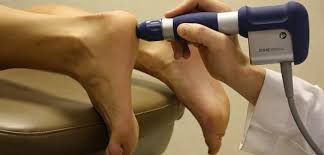
Blog, Uncategorized
Heel pain can stop you in your tracks from the moment you get out of bed your heel can be unbearable. Our patients describe not being able to put their heel to the floor, hobbling to the shower or toilet only to get a slight relief but then for their pain to come back later in the day! It stops you functioning and stops you from all the activities you love!
When you have this pain you search and cling to answers. Many patients are sadly told by their GP there is nothing they can do. They may be given hard insoles or orthotics by well-meaning practitioners or lately they are prescribed Shockwave!!!
Shockwave is the latest treatment for this debilitating condition. Shockwaves cause micro trauma to the diseased tendon tissue. This results in inflammation, which allows the body to send healing cells and increase the blood flow to the injured site.
While we make the application of this technology sound very simple, in the wrong hands and if you don’t have experience applying this in practice, this therapy can at best not work, and at other times in the worst case scenario, make your condition worse. Anyone can hold a Dentist drill but would you let anyone do your filling for you?
Our team of therapist at A Step Ahead Foot + Ankle care have been using this technology for a number of years we see approximately 8 to 12 patients a day using this technology. Our staff unlike others who have adopted this therapy lately, have a great deal of experience and are continuously looking at ways which will increase the effectiveness of the therapy.
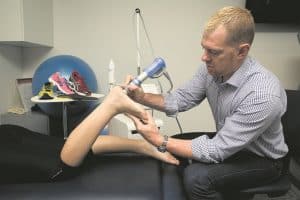
Along with the experience our practitioners have comes the knowledge that in almost all cases shockwave therapy by itself will not fix you ………yes you heard correctly!
When patients visit us for heel pain and other muscular problems yes we do often use Shock wave, however it is only part of a treatment plan. We also give you advice on the right foot wear, stretching, possible taping and analysis your walk and run to assess if you need soft comfortable orthoses. Shock wave may also not be right for you our Podiatrist may decide you are better suited to other soft tissue therapies we use.
So while Shock wave can be an excellent tool in the fight against chronic heel pain. Without experience and used in the wrong way, or used in isolation the success rate of this therapy drops dramatically.
At A Step Ahead Foot and Ankle care we have been successfully treating people for heel pain for at least 15 years. If you are suffering from Heel pain we would really like to help you. We are situated in Penrith and St Marys in Western Sydney. You can contact us on 96732987 or 47322007.
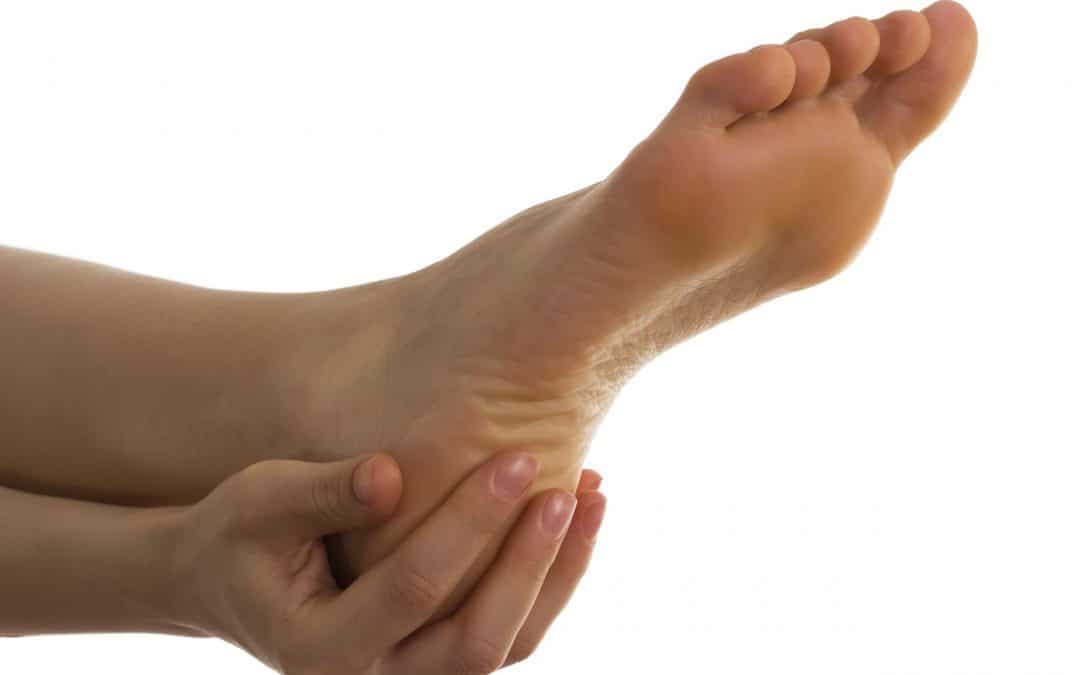
Blog, Uncategorized
1. You decide to go it alone and NOT get professional advice.
Of all the people we see, a large proportion of them have never had any care or professional advice. Quotes like “I just thought it would go away” or “A friend told me what they did to get rid of the pain and I just tried that”. Most times it doesn’t! You will increase your chance of beating heel pain, significantly by getting a professional opinion. Professional advice and treatment costs money. Yes some people find this expensive however others find it invaluable. It depends on how much you really want to get rid of your very sore heels?
2. You wear thongs because your feet are sore
Wearing thongs, Croc type shoes or even bare feet for many people make their feet feel better initially but all our experience tells us you are doing more damage. The pain you feel days later not necessarily at the time. You are welcome to argue this point as much as you like, while you continue to hobble …………
3. You get advice and then choose which bits you use.

Great work on getting advice now it’s time to take it ……yes ALL of it. When a care plan is developed for you, if you choose only the bits you like to hear and the easy bits, you will end up failing to get better. Your Podiatrist should work with you as a patient to establish the best way to relieve you of your pain. They should speak to you about what shoes are best for you. What treatment will get you better quickest, including stretching, therapy to relax the soft tissue and possibly orthotics. Now choosing NOT to do some of the suggested treatment universally ends up with patients not getting better. Our Podiatrists do all that and more, does yours?
4. You bought hard rigid orthotics from a Podiatrist.
Our experience tells us that rigid hard orthoses on most occasions irritate the heel and the arch region adding to your discomfort. We have over the years collected many pairs of rigid orthotic from patients who give them to us in frustration after finding they have hindered rather than help. Secondly if this is the only therapy you were given, with the exception of a couple of possible stretches then we would suggest to you that there is more to getting rid of your pain than this – ask the question “So how is this rehabilitating my damaged soft tissue” ?
5. You continue to do loads of exercise
Einstein is once said to have defined Madness as “Continuing to do things exactly the same and hoping for a different result”. As practitioners we are probably sportier than others and so we truly do understand your hopes to continuing to exercise. But in truth unless you make some form of change its unlikely you will get better. There are other options available which can help you to stay fit like rowing, weight training and alike. Let’s work together to see what we can allow you to keep up your health goals. If your practitioner is telling you there is no need to change then we would suggest the first change you make is the practitioner!
6. You choose a practitioner who does not understand heel pain.
So your GP says they will fix your heel pain? Your Physio who is treating your shoulder says the same and the Podiatrist you see, who works a day a week at your local GP clinic and cuts your toe nails, says they will fix it no problem. Who do you choose?
Your heel pain is not simple its complex and for you it’s really sore! Choose someone who see’s and treats heel pain regularly. Choose someone who is passionate about making sure that they help you on the way to getting you better. All the people above are probably very good at what they do, but they most likely won’t end up helping you beat your pain!
How can we help
At A Step Ahead foot + Ankle care we see approximately 8 to 12 heel pain patients a day. We have patients that travel literally hundreds of kilometres to seek our help – Which is really lovely! Our clinics are set up quite specifically to treat patients with heel pain. We have invested hundreds of thousands of dollars into equipment and the latest technology to help us, help you- beat heel pain.
Our principal Podiatrist Brenden Brown is recognised as an expert in Podiatry. A past President of the Australasian Podiatry council he is considered an expert in the area of Foot health, appearing regularly on television shows like the Today Show and Magazines like Men’s Health.
It would be a pleasure to help you beat your heel pain.
We are located in Penrith and St Marys in Sydney’s Western suburbs. You can contact us on 47322007 or 96732987 we hope you will.

A Step Ahead Foot and Ankle care

Blog, Uncategorized
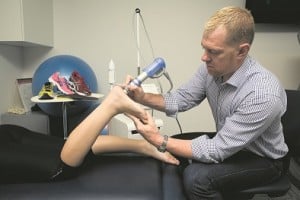
Heel pain treatment cuts down recovery time
Shock wave therapy is a relatively new treatment option used for musculoskeletal conditions. This treatment was initially seen in hospitals for “breaking down” kidney stones that were too large to pass. A Step Ahead Foot and Ankle care has found it particularly helpful for HEEL PAIN.
Now the technology has been modified so that the high pressured acoustic shockwaves travel through the skin to stimulate blood flow to the injured area which speeds up our own healing processes within our body for tissue repair.
A Step Ahead Foot and Ankle care were one of the first clinics in Sydney to try this effective new technology and have found it to be highly successful.
What conditions is it suitable for?
Shock wave is commonly used for musculoskeletal conditions, some examples include:
- Heel pain / plantar fasciitis.
- Achilles tendonitis / tendonosis
- Patella tendonopathy.
- Shin pain / Shin splints.
The Podiatrist at A Step Ahead Foot and Ankle care will be able to tell you if your problem is suitable for this treatment.
What does it feel like?
Pressure is pushed on the injured area with the probe. The shockwave treatment will feel a little uncomfortable like short bursts of throbbing sensations through the probe. Almost 100% of our patients while first a little hesitant have found this to be much better than first thought.
How can A Step Ahead Help you?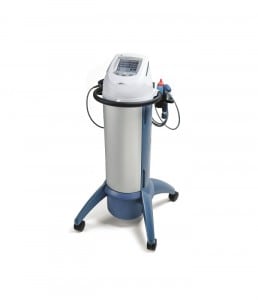
A Step Ahead Foot + Ankle care have had many years of experience using this technology and have become a leader in this field. With years of experience with this technology combined with almost 20 years of clinical practice experience you are in good hands
Resolution of pain is most often achieved through a combination of treatments this may include:
- Assessment of foot and leg mechanics
- Activity modification
- Footwear advice
- Orthotic therapy
- Stretching exercises
- Taping
Please call our helpful reception staff to make an appointment and be sure to mention your interest in the exciting new technology. 9673 2987 or 43322007



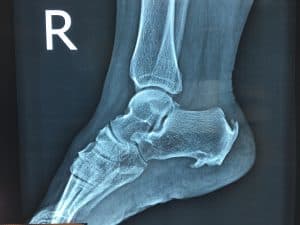


















 Dr Brenden’s White paper report on the “6 Reasons You Won’t Beat Heal Pain” outlines what’s stopping you from beating this and tips on how to stop it in its tracks!
Dr Brenden’s White paper report on the “6 Reasons You Won’t Beat Heal Pain” outlines what’s stopping you from beating this and tips on how to stop it in its tracks!